– For labor updates, follow: @daldridgetnt | @AschNBA – NBA.com’s Labor Central After 15 hours of negotiations Friday-into-Saturday –- and 149 days of lockout start to finish -–
representatives of the NBA owners and players reached a tentative deal on settling their various lawsuits that should lead to a new collective bargaining agreement that will salvage a shortened 2011-12 season beginning on Christmas Day.
Details of what will become a new labor contract still were vague when the meeting ended after 3 a.m. ET at a New York law office. But the bones of a deal reportedly call for the players to receive a “band” share of basketball-related income ranging from 49 percent to 51 percent depending on the league’s growth (with a more reasonable shot at 51 than in previous offers).
A laundry list of system issues, meanwhile, are intended to make the NBA more competitive across its 30 teams. NBA commissioner David Stern and Billy Hunter, the former executive director of the players’ former union, met with reporters in an impromptu joint news conference shortly after the meeting.
“We’ve reached a tentative understanding,” Stern said, “that is subject to a variety of approvals and very complex machinations. But we’re optimistic that will all come to pass and that the NBA season will begin on December 25th, Christmas Day, with a triple-header. “We’re very pleased that we’ve come this far.
There’s still a lot of work to be done in a lot of places, with a lot of committees and player groups and the like. But we’re optimistic that it will hold and we’ll have ourselves an NBA season. Stern said the owners’ labor relations committee would be briefed Saturday, with the agreement passing then to the overall Board of Governors. The commissioner said he expects both bodies to endorse the deal. Said Hunter: “We’re going to turn it all over to the lawyers here and have them work out all the details. We’ll be able to then talk with you further as that process proceeds
.” It could take a week to 10 days for the players to re-form their union and ratify a formal CBA. Stern and Hunter did share a few details on the shortened season. A 66-game regular-season schedule, first reported by the New York Times Wednesday, is likely, pushing the start of a full playoff bracket a week or so later into spring.
The plan is for training camps and free agency to both begin on Dec. 9, though details remained sketchy. All-Star Weekend in Orlando, initially set for Feb. 24-26, is expected to be preserved. Technically, the talks that stretched from noon Friday into the wee hours Saturday were aimed at settling the antitrust lawsuit filed last week by the players when they dissolved their union. But the essence of that settlement will serve as the new CBA, assuming remaining “B-list” issues are worked out, lawsuits by both the players and the league (anticipating the union’s disclaimer of interest) get dismissed, the union gets re-formed with the league’s approval and the deal is ratified by both the NBA’s 30 owners and its 430-plus players.
The “A-list” issues, though, were the ones that had hung up the season, forcing what will be an opening night delayed by 55 days. They’re the ones that caused bargaining to break down Nov. 14 and they’re the ones that needed to be addressed to both sides’ satisfaction –- or tolerable dissatisfaction -– for the tentative agreement to get struck. Finding middle ground on those was key. Among them: – The mid-level exception for non-taxpaying teams will have a maximum length of four years every season (instead of alternating at four years, then three years).
Starting salary can be as much as $5 million. – There apparently will be a “mini” MLE for taxpaying teams, restricting the amount they can offer to free agents. – A 10 percent maximum escrow tax will be withheld without the unlimited “true up” amount requested by the owners in their previous offer. – Extend-and-trade deals –- as used by Carmelo Anthony and the New York Knicks last season –- will be modified but not eliminated in a new CBA.
That could impact players such as Orlando’s Dwight Howard and New Jersey’s Deron Williams. – A new benefits pool for players equivalent to 1 percent of BRI will include annuities for retired players ages 35-50, as well as funds for continuing education. – The “match” period for restricted free agents will be reduced from seven days to three days.
Qualifying offers are expected to be increased. – Other compromises were believed to have been reached on the “repeater” luxury tax penalties to be paid by teams exceeding the tax threshold in four of any five seasons. Among the “B-list” issues are the age limit for entry to the draft (possibly upping to 20 years and two years out of high school), drug testing modifications, discipline and D League assignments. Derek Fisher, the president of the currently disbanded National Basketball Players Association and veteran guard for the Los Angeles Lakers, said: “The most important key thing here is our fans, and the support from the people and the patience through a large part of this process.
That’s where a lot of this credit goes to. The efforts that have been made have been largely with them in mind.” The lockout was imposed by the owners on July 1 in their quest to reduce the players’ share of compensation (previously 57 percent of BRI) to address more than $300 million in losses last season. They also cited an equal but separate goal of improving competitive balance within the league by limiting the flow of talent to the league’s biggest-spending teams.
“I think it will largely prevent the high-spending teams from competing in the free agency market in the way they’ve been able to in the past,” Deputy Commissioner Adam Silver said. “It’s a compromise. It’s not the system we sought out to get in terms of a harder cap, but the luxury tax is harsher than it was in the past deal. We hope it’s effective. … We feel, ultimately, it will give fans in every community hope that their team can compete for championships.
” Said San Antonio owner Peter Holt, chairman of the labor relations committee: “I appreciate what Billy and Derek and the players have compromised on because it will allow us, as a small market, to be competitive. Create more parity across the 30 teams. We’re really excited … we’re excited for the fans, we’re excited to start playing basketball.” From the start, the players were faced with concessionary bargaining.
They had lowered their offers on BRI from 57 percent to 53 percent to, eventually, a willingness to accept a 50-50 split – with certain considerations in system issues. Among them: reconfigured salary-cap exceptions, sign-and-trade deals, escrow-money withholding and added restrictions on teams above the luxury-tax threshold. When the owners’ most recent offer from Nov. 10 still did not meet with their approval, the players’ 30 team representative chose to pursue the antitrust litigation.
The plan: Either gain leverage for an out-of-court settlement or, failing that, convince the courts that they were due triple damages worth as much as $6 billion (based on the players’ annual $2 billion in compensation). Hiring noted antitrust attorney David Boies, the players filed a lawsuit in U.S. district court in Minneapolis. But Boies from the start suggested that a settlement would be the most expeditious route to a resolution – especially if both sides were serious about saving some version of a 2011-12 season.
The likelihood of a settlement seemed slim as the week began, with Boies admitting that never side had even picked up the telephone to initiate talks. But that reportedly changed when Jim Quinn, a longtime adversary of Stern from his work dating back to the Oscar Robertson suit against the league in the 1970s, right up through the 1998-99 lockout, got involved.
Quinn worked back channels to get the sides talking, with some contact Tuesday and then again Friday for what became the final, marathon session. The players were represented Friday by Hunter, Fisher, Maurice Evans, attorney Ron Klempner and economist Kevin Murphy. The NBA’s reps were Stern, Silver, Holt, attorney Rick Buchanan and economist Dan Rube.
The sides met at the law offices of Weil Gotshal & Manges LLP, where Quinn works. Actually, Quinn, Boies and players’ attorneys Jonathan Schiller and Jeffrey Kessler were not in the room. But Kessler, who has had a contentious relationship with Stern and the owners, apparently still make his presence felt. According to Yahoo! Sports, he participated at one point via speaker phone and proposed that the players get a 51 percent share of BRI.
He reportedly was rebuffed by Stern and Holt before or after a separate conference call with the labor relations committee. Perhaps more than the litigation, the calendar provided the urgency to complete the tentative deal, with Christmas an annual highlight of the league’s schedule. Stern has said that 30 days will be needed from a handshake agreement to the tipoff of any regular season, so the math working forward from Friday was simple. In 1998-99, when the NBA also lost regular season games to a labor lockout, a collective bargaining agreement was reached on Jan. 6. A 50-game schedule began on Feb. 5 and ran until May 5, with a full playoff bracket after that.



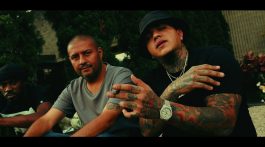

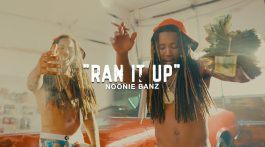
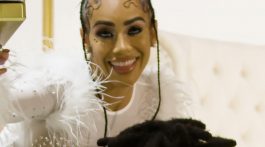

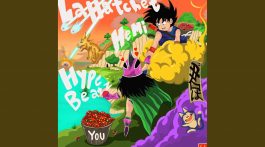
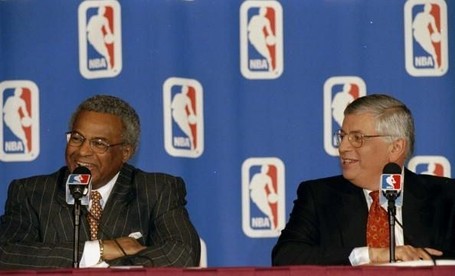
No Comment